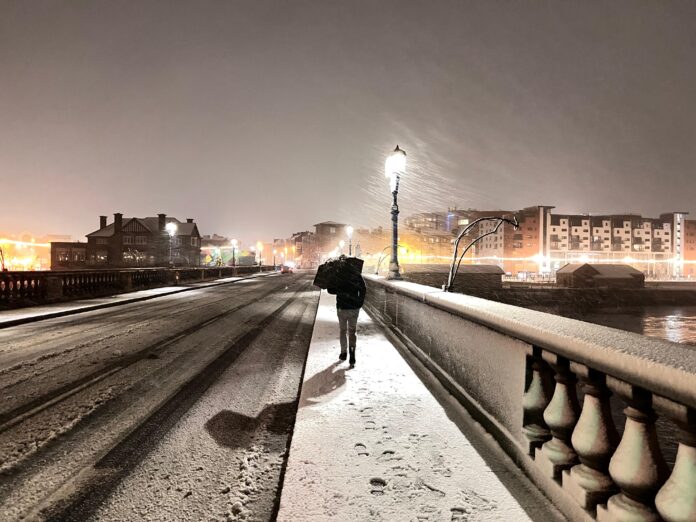
NOVAS, the support organisation for people experiencing homeless in Limerick City, has said that, to the best of its knowledge, all rough sleepers were accommodated in emergency shelter as the cold snap hit Ireland this week.
Despite this, Novas spokesperson Una Burns said that the number of rough sleepers in Limerick City has jumped alarmingly over the last year.
Ms Burns was speaking with the Limerick Post as the latest official figures from government show that there were 201 children and 551 adults homeless in the Mid West at the beginning of December. Of that number, 456 were in emergency accommodation in Limerick.
This is a start contrast to last January, when the figures locally stood at 149 children and 361 adults.
Ms Burns told the Limerick Post that following the start of the cold snap last Friday, all of the organisations covering the Mid West banded together to employ emergency overflow accommodation measures, adding that, to the best of her knowledge, all those presenting in need of a place to sleep in Limerick were given indoor temporary accommodation.
This comes as temperatures after the snowfall at the weekend were predicted to fall as low as -8 or -10 degrees in Limerick during the week.
“We all took in extra people at our centres. This was purely a humanitarian response to the conditions. But I say that with a health warning because because, while we tried to reach everyone, there may still be people who were not aware that extra accommodation was available,” Ms Burns told the Limerick Post.
The Novas representative said that the nature of the accommodation is often “in communal spaces on roll-out beds” in such surge situations.
“Everyone has banded together, including our usual residents, to make sure people are safe. But it’s not a sustainable solution and it’s not long term.”
Ms Burns said that the situation of rough sleeping in Limerick has changed radically in recent times.
“Over the years there were about 10 regular rough sleepers in Limerick. We don’t have the same issues that exist in Dublin and other places, but during the summer there were about 45 people sleeping rough.”
She explained that “a rough sleepers count at the start of December showed 21 people sleeping rough, but this is most likely not the whole picture. By its nature, rough sleeping is concealed. The people doing that don’t want to be found because it can be dangerous. They tend to go to places still outside but maybe down steps, in basements, or car parks. They are afraid of being found so it’s hard to get a real picture.”


